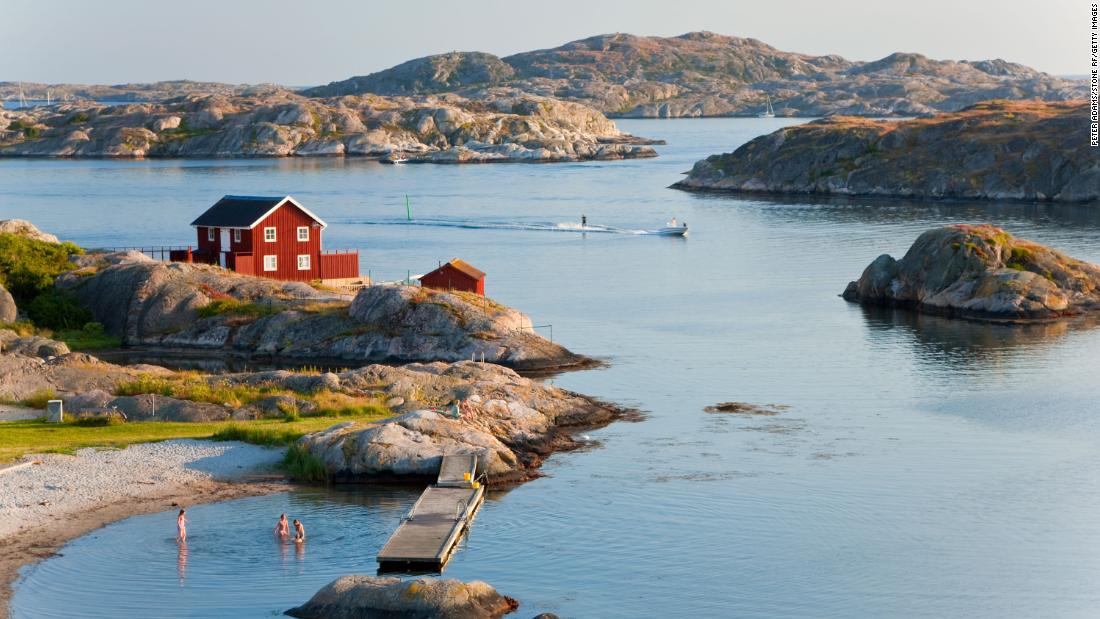
(CNN) — The US Centers for Disease Control and Prevention has put a Nordic travel favorite on its “high” risk list for Covid-19 along with two other places.
Representing three continents, the three destinations added to the list on Tuesday are:
• Guatemala
• Morocco
• Sweden
Level 3, or “high,” is now the top rung in terms of risk level and applies to places that have had more than 100 cases per 100,000 residents in the past 28 days. Level 2 and Level 1 are considered “moderate” and “low” risk, respectively.
All three new entries to Level 3 on Tuesday had previously been at Level 2.
There were almost 115 destinations at Level 3 on July 5. Level 3 locations account for almost half of the roughly 235 places monitored by the CDC.
Level 4, previously the highest risk category, is now reserved only for special circumstances, such as extremely high case counts, emergence of a new variant of concern or health care infrastructure collapse. Under the new system, no destinations have been placed at Level 4 so far.
More on Level 3

The village of Oia on Santorini island is a favorite tourist spot in Greece, which remains at the CDC’s Level 3.
Francesco Riccardo Iacomino/Moment RF/Getty Images
Much of Europe has been stubbornly lodged at Level 3 for months with the summer travel season in full swing. As of July 5, the following popular European destinations were among those remaining at Level 3:
• France
• Germany
• Greece
• Ireland
• Italy
• The Netherlands
• Norway
• Portugal
• Spain
• United Kingdom
Those aren’t the only high-profile spots that find themselves at Level 3. Numerous other destinations around the world are among those in the “high” risk category, including the following:
• Brazil
• Canada
• Costa Rica
• Malaysia
• Mexico
• South Korea
• Thailand
• Turkey
Level 2

Baalbek is a UNESCO World Heritage Site in Lebanon, which has moved up to the CDC’s “moderate” risk category.
Luis Dafos/Moment RF/Getty Images
Destinations carrying the “Level 2: Covid-19 Moderate” designation reported 50 to 100 Covid-19 cases per 100,000 residents in the past 28 days. The CDC moved three places to this level on Tuesday:
• Jordan
• Lebanon
• North Macedonia
The move was not good news for the Middle East’s Jordan and Lebanon, which had been at Level 1. For North Macedonia in Europe’s Balkans, the move was in a positive direction, having previously been at Level 3.
There are 20 places in the “moderate” risk category this week.
Level 1
To be listed as “Level 1: Covid-19 Low,” a destination must have had 49 or fewer new cases per 100,000 residents over the past 28 days. Just two little island destinations were added to the category on July 5:
• Saba
• Saint Pierre and Miquelon
Saba, in the Caribbean, had been at Level 2. Saint Pierre and Miquelon, a French archipelago south of Newfoundland, Canada, had been at Level 3.
A few of the more popular places in the “low” risk category this week include Indonesia, India and the Philippines.
Unknown

The Hungarian Parliament is seen through the arches of Fisherman’s Bastion in Budapest. The CDC warns against travel to places where the Covid-19 risk is “unknown.”
Alexander Spatari/Moment RF/Getty Images
Finally, there are the destinations the CDC has deemed to be of “unknown” risk because of a lack of information. Usually, but not always, these are small, remote places or places with ongoing warfare or unrest. Four places were added to this category this week:
• Haiti
• Hungary
• Iran
• Mozambique
Haiti, Iran and Mozambique had all been at Level 1 last week. Hungary, a favorite stop on the Eastern European travel circuit, had been at Level 3.
The CDC advises against travel to these places precisely because the risks are unknown. Other destinations in this category that typically draw more tourist attention include French Polynesia, Macau and the Maldives.
A medical expert weighs in on risk levels
Transmission rates are just “one guidepost” for travelers’ personal risk calculations, according to CNN Medical Analyst Dr. Leana Wen.
We’ve moved into “a phase in the pandemic where people need to make their own decisions based on their medical circumstances as well as their risk tolerance when it comes to contracting Covid-19,” said Wen, who is an emergency physician and professor of health policy and management at the George Washington University Milken Institute School of Public Health.
There are other factors to weigh in addition to transmission rates, according to Wen.
“Another is what precautions are required and followed in the place that you’re going and then the third is what are you planning to do once you’re there,” she said.
“Are you planning to visit a lot of attractions and go to indoor bars? That’s very different from you’re going somewhere where you’re planning to lie on the beach all day and not interact with anyone else. That’s very different. Those are very different levels of risk.”
Vaccination is the most significant safety factor for travel, since unvaccinated travelers are more likely to become ill and transmit Covid-19 to others, Wen said.
And it’s also important to consider what you would do if you end up testing positive away from home.
Top image: The island of Tjorn off the west coast of Sweden. (Peter Adams/Stone RF/Getty Images)
